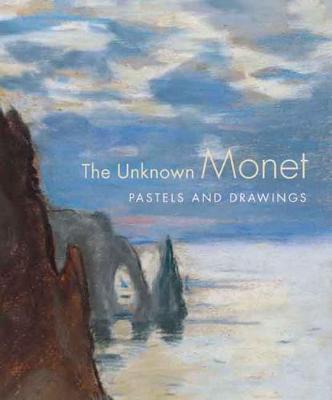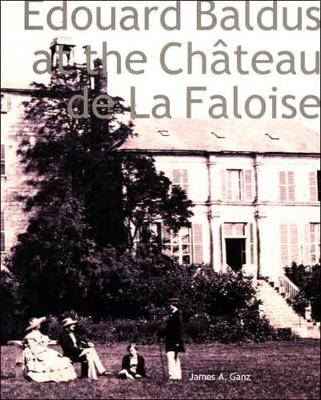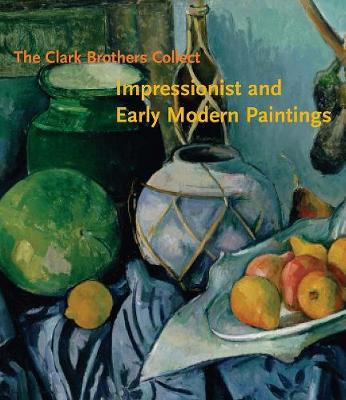Clark Art Institute Series (YUP)
4 total works
Monet has long been seen as an anti-draftsman, an artist who painted his subjects directly and whose rarely seen graphic works were marginal to his artistic process. In an effort to develop his public image, Monet denied the role of drawing in his working method. In actuality, Monet began his career as a caricaturist and as a teenager developed a passion for drawing that was never extinguished. He went on to master the medium of pastel and included seven in the first Impressionist exhibition in 1874.
Citing recently discovered, unpublished documents that overturn the accepted image of the artist, The Unknown Monet reveals an extensive group of graphic works created over the course of the artist’s career, many of which are unknown to the general public and to scholars: beautiful pastels, stunning black chalk drawings, and fascinating sketchbooks, which include pencil studies that relate to many of his paintings. The book also shows how Monet exploited the print media to promote his art.
The most important publication on Monet to appear in a generation, this illuminating volume is essential to anyone interested in his work, Impressionism, and nineteenth-century French culture.
Distributed for the Sterling and Francine Clark Art Institute, Williamstown, Massachusetts
Exhibition Schedule:
Royal Academy of Arts, London (March 17 – June 10, 2007)
Sterling and Francine Clark Art Institute, Williamstown, Massachusetts (June 24 – September 16, 2007)
Van Gogh and Nature
by Richard Kendall, Sjraar van Heugten, and Chris Stolwijk
The celebrated painter Vincent van Gogh (1853–1890) had a lifelong fascination with the natural world. He spent his youth in rural Holland, and the country’s flat landscapes, trees, flowers, and birds would feature in his early art. After he moved to Paris, he encountered new radical thinking about art and humanity’s changing relationship with nature. Later, in Provence and Auvers, he discovered unfamiliar terrain, flora, and fauna that further influenced his artistic ideas and subject matter. Van Gogh’s images of such diverse environments reflect not only his immediate surroundings but also the artist’s evolving engagement with nature and art.
Van Gogh and Nature is an eye-opening and beautifully produced catalogue, which accompanied the best-attended special exhibition in the Clark Art Institute's history. It chronicles the artist’s ongoing relationship with nature throughout his entire career. Among the featured works are Van Gogh’s drawings and paintings, along with related materials that illuminate his reading, sources, and influences. Vivid color photography and explanatory texts based on new research by the authors clarify a central theme of Van Gogh’s oeuvre.
Distributed for the Clark Art Institute
Exhibition Schedule:
Clark Art Institute
(06/14/15–09/13/15)
Previously announced
Edouard Baldus (1813–1889) was the most important French architectural photographer of the mid-19th century. This book offers an in-depth exploration of one of his most intriguing projects—a remarkable series of views of the Château de La Faloise, in which his subject was not primarily the country house but the owner and his family at leisure on its grounds. James A. Ganz locates the photographs at a key moment in Baldus’s career and during one of the most eventful decades in the history of French photography, showing that they stand at a crossroad between the English “conversation piece” and the birth of Impressionist portraiture in the early paintings of Monet and Bazille.
Distributed for the Sterling and Francine Clark Art Institute, Williamstown, Massachusetts
The Clark Brothers Collect
by James A. Ganz, Michael Conforti, Neil Harris, and Gilbert T. Vincent
While the brothers shared a love for great art, they collected in different ways. Sterling was a private collector; his French Impressionist masterpieces, including thirty-eight Renoirs, and works by such American artists as Winslow Homer, John Singer Sargent, Frederic Remington, and Mary Cassatt now form the distinguished collection of the Clark. Stephen, a businessman and museum trustee, acquired modern works by such masters as Georges Seurat, Paul Cézanne, Henri Matisse, Pablo Picasso, and Vincent van Gogh, often with specific museum collections in mind—including The Metropolitan Museum of Art, the Museum of Modern Art, New York, and the Yale University Art Gallery.
Handsomely produced, this book features over two hundred illustrations of the works from Sterling’s and Stephen’s collections. It also includes essays by distinguished scholars, an illustrated chronology, and a previously unpublished checklist of works purchased by Stephen Clark.
Published in association with the Sterling and Francine Clark Art Institute
Exhibition Schedule:
The Metropolitan Museum of Art, New York (May 22 – August 19, 2007)
Sterling and Francine Clark Art Institute, Williamstown, Massachusetts (June 4 – September 4, 2006)



